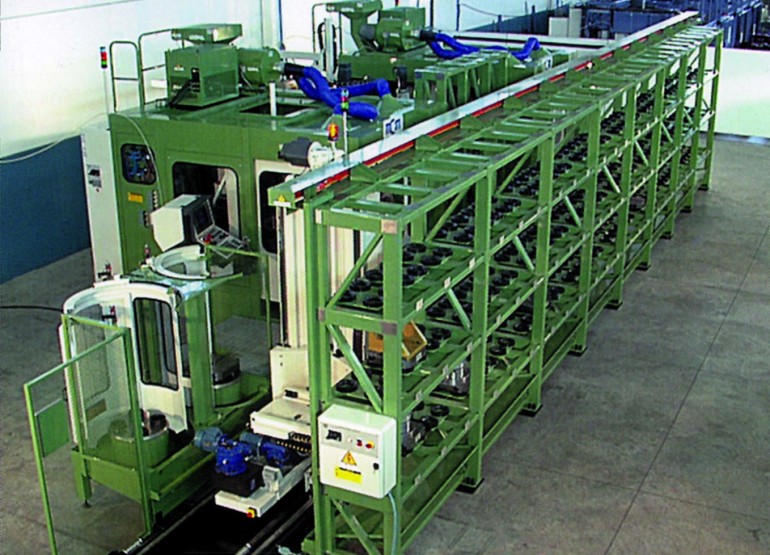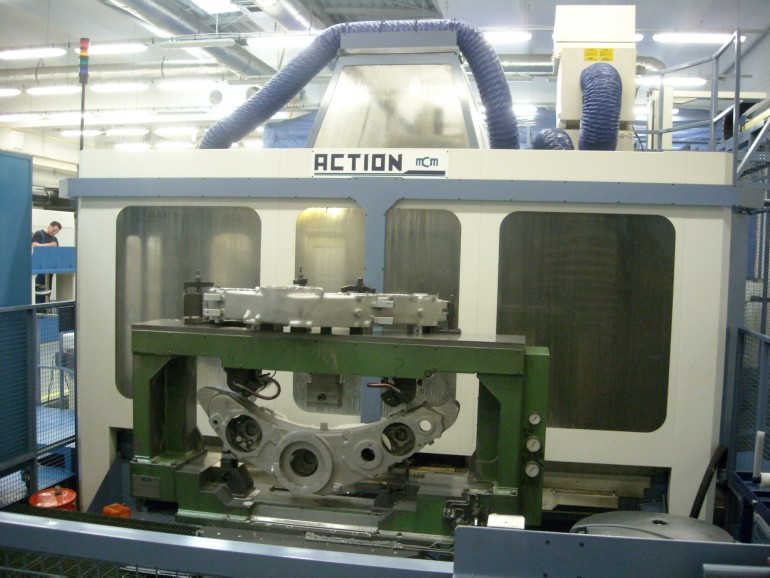Home / MCM / History / 1990-2000
1990-2000
1990
MCM develops its prototype of AGV (Automated Guided Vehicle), wire-guided carriage for pallet management with self-aligning system without mechanical references to the ground.
1991
Debut of the new Media machining centre, greatly appreciated by general mechanics subcontractors for its intermediate size in 4-position multipallet configuration.
1992
MCM pursues the concept of total flexibility also through linear pallet systems (FMC, FMS) and multi-pallet circular systems with different positions on one or more levels. These configurations will be made available for all models in the growing range.
With the acquisition of an important order for Sidel group, that processes molds for PET bottles, MCM develops its first 5-axis machining centre with tilting table. This is a milestone for the development of the range.
1993
The new Clock HP machining centre features a 20,000-RPM HSK 63 high-speed milling spindle and a very fast tool change (lower than one second). A new state of the art to reduce production times.
The versatility of Clock module becomes the basis to develop different versions, becoming the new standard of MCM range.
1994
With the Clock 800 module, MCM develops for VM Motori an FMS system consisting of 4 machining centres, complete with automation and served by synchronized gantry robots for workpiece loading and unloading. Workpiece feeding through continuous roller conveyor.
1995
Acquisition of the first order in the aerospace industry. Dassault Aviation chooses the MCM flexible manufacturing system consisting of four 5-axis Clock 900 Mirror machining cells. The company take part for the first time in the International Paris Air Show at Paris-Le Bourget.
1996
Development of the new Clock 600 Auto version dedicated to the automotive industry, which is chosen in Italy, France and the United States by the main subcontractors, in the various configurations available combined with robots and FlexLink automation systems for workpiece feeding (MCM Cyclops).
The internationalization process continues with the establishment of MCM Deutschland and MCM USA.
1997
Debut of the new Forerunner, one of the first applications of linear motors to a machining centre in the world. This solution features very high dynamics and reliability, thus allowing MCM to step into the markets of aluminium alloy processing, in particular for turbine blades.
1998
Acquisition of the first Safran order (Snecma Gennevilliers, now Safran Aircraft Engines) for the production of turbine blades with two CLOCK bi-pallet machining centers.
Creation of Metrology department and implementation of the first Leitz measuring machine at MCM.
FMX becomes jFMX on Java Virtual Machine platform (JVM) and at the same time it is decided to use the web browser as the key to the user interface, bringing the management back to the PC.
1999
Acquisition of the first Hispano Suiza order (now Safran Transmission Systems) for the production of transmission gearboxes for aero-engines. The 4-axis Action machining centre, complete with process, has proved to be a winning solution in guaranteeing the very high precision required.

.jpg)
.jpg)
.jpg)
